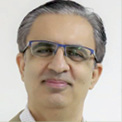COVID-19, also popularly known as the coronavirus, hit the world by surprise starting in December 2019 in China, and then the rest of the world in 2020. Entrepreneurs and the start-up scene took a real blow as a result. If one has a creative solution for environmental issues, traffic, education, or a cure for diabetes, then that is great. But this is not the appropriate time for these ventures.
The focus today for governments and the investor community has shifted mainly in the direction of finding solutions that address COVID-related problems. In March 2020, we saw a huge demand for purifying gels, gloves, and cleaning solutions as physical contact was considered the biggest disease spreader. Later, it was found that the virus is airborne, and this has prompted the widespread use of medical face masks and face shields to prevent the virus spread.
Conventional face masks typically apply a filter cloth that is placed over the mouth, nose, and cheeks of the user. The filter may be tied through a ribbon that is placed around the ears. Face masks, however, have presented several issues to the public. For example, masks cause breathing and talking discomfort for users, especially when the masks are worn for extended periods. In addition, viruses can stick to the masks, which can transform the masks into virus carriers. Moreover, most masks do not cover the eyes unless an additional transparent face shield is used. It has been shown that the virus can also spread by contact with the eyes. Face masks also cause discomfort in hot weather as they can make people sweat. For people who wear glasses, the masks may fog the glasses due to exhaled air being directed upward by the mask. It is not possible to see the facial expressions of people when they are covered with face masks. It also prevents hearing-impaired people from reading other people’s lips. Crucially, many masks do not provide a completely filtered environment around the mouth and the nose. This is because in many masks, the edges of the mask do not fully conform to the contours of the face, leaving unfiltered spaces typically on the cheeks below the eyes.

The bottom line is that alternative solutions are required, and this is where the idea of the air shield mask was born. The concept is very simple and is shown in the accompanying figure. It consists of a device worn on the forehead, which generates a powerful airflow through an air slot in such a way that an invisible shield is created in front of and around the face. The shield would block airborne viruses from touching the human face based on the concept that the pressure inside this shield is much higher than that of the surrounding air pressure, therefore creating a differential pressure system that would block viruses or other airborne containments. It is imperative that the incoming air to the device be filtered such that the device’s generated airflow is clean and virus free. Therefore, air filters are added to the design. The shield is not only helpful to protect the wearer from surrounding people who carry the virus, but it would also protect the surrounding people, as the air shield would slow or dampen a sneeze generated by the carrier wearing the device because the air shield generates a downward force on the exhaled air.
Technically, the challenges are not very simple. The device cannot be heavy on the head, it has to be esthetically pleasing, it has to generate a strong air flow while maintaining a long battery life for the user, and it has to be designed in such way that it can be mass produced at a reasonable price. Fortunately, we have the help of Saeb Shweki (mechanical engineer), Abu El Ez (electronic engineer), and Laila Salah (mechanical engineer), who have been volunteering their exceptional talents to make this happen. The invention has been patented. The team is currently developing and testing initial prototypes using 3-D printers. Intensive computer simulations have been taking place to optimize air-flow dynamics. So far, the results have been very promising. We are also seeking initial investments to work with a manufacturing facility to produce the mask device in large quantities. This is to be followed by crowdfunding activities where the device will be sold to initial enthusiasts. Our first market will focus on people who wear glasses and suffer from fogged lenses when they use conventional masks. Currently, there are over one billion people worldwide who wear glasses. Beyond the coronavirus era, this mask may be used for medical staff, weak-immune-system patients, people who live and work in dusty or polluted environments, firefighters, agricultural workers, and home cleaners, amongst other users.


